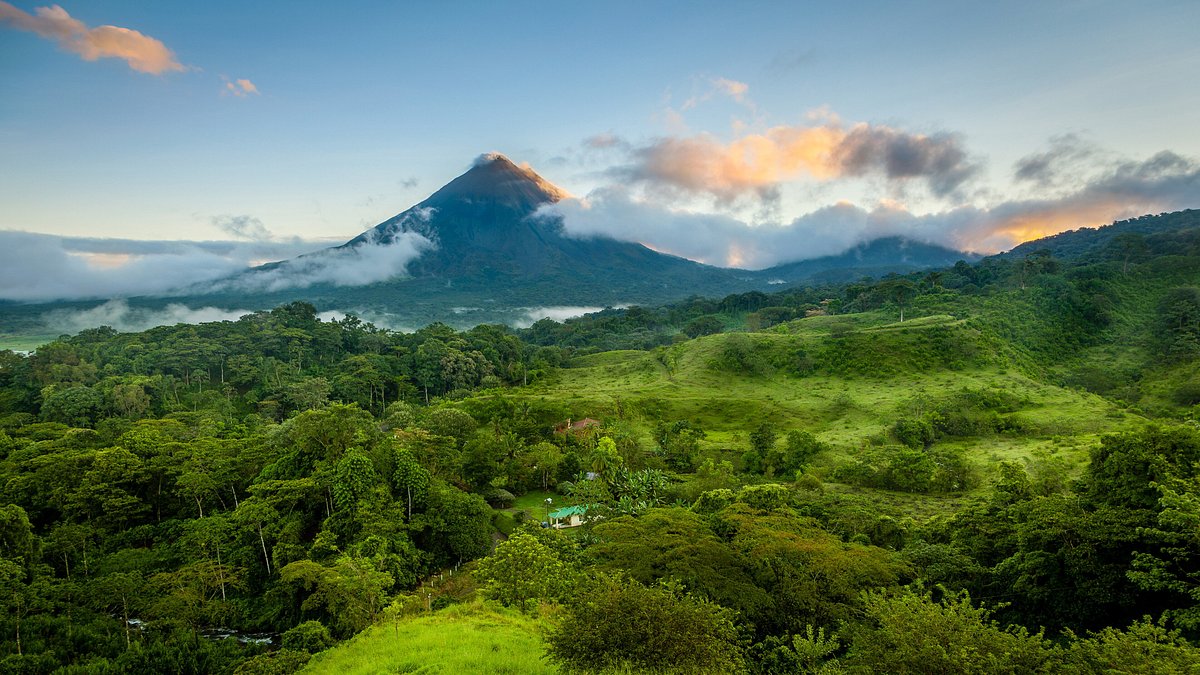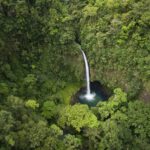Costa Rica has long been a beacon for eco-tourists and nature enthusiasts, with its breathtaking rainforests teeming with life and adventure. Home to 6% of the world’s species, this small Central American country punches well above its weight when it comes to biodiversity. For environmental activists, Costa Rica is also proof that conservation and progress can coexist harmoniously—a rare and inspiring success story.
If you’re curious about what makes Costa Rica’s rainforests such marvels, from their ecological importance to the breathtaking glimpses of wildlife they offer, this is the guide you’ve been waiting for. Keep reading to learn about the vibrant flora and fauna, the role these rainforests play in sustaining our planet, and how you can start planning your own eco-conscious rainforest adventure.
Costa Rica’s Rainforests at a Glance
Costa Rica features a variety of rainforests, including tropical and cloud rainforests, each brimming with unique ecosystems. Spots like the Monteverde Cloud Forest and Corcovado National Park have gained international recognition for their lush, unspoiled beauty. What truly sets Costa Rica apart, though, is its national commitment to conservation—25% of the country is protected land, a haven for wildlife and plant species.
Rainforests cover around 51% of Costa Rica’s land area, offering more than just stunning scenery. They are critical habitats for countless species and essential components in the global fight against climate change. With gorgeous green canopies, cascading waterfalls, and the soothing hum of natural life, stepping into a Costa Rican rainforest is like entering another world—one that captivates the senses and sparks awe at every turn.
Why Rainforests Matter
Rainforests are often dubbed the “lungs of the Earth,” and with good reason. These ecosystems absorb vast amounts of carbon dioxide and release oxygen, helping regulate the planet’s climate. Costa Rica’s rainforests, in particular, serve as vital carbon sinks that mitigate global warming’s effects. For this small yet mighty country, rainforests also aid in maintaining water cycles, preventing soil erosion, and supporting agriculture by preserving essential pollinator populations.
Additionally, these ecosystems are treasure troves of potential medical discoveries. Many of today’s life-saving medications are derived from rainforest plants, and Costa Rica’s biodiversity offers countless untapped opportunities for future pharmaceutical advancements. Preserving these forests is not just an environmental mission—it’s a human imperative.
Meet Costa Rica’s Flora and Fauna
One of the undeniable highlights of visiting Costa Rica’s rainforests is the chance to witness its immense array of wildlife. Here are some of the standout species that make these rainforests so extraordinary:
Iconic Fauna
- Poison Dart Frogs
These tiny, brightly colored amphibians are a symbol of Costa Rica’s rainforests. Though beautiful, their vivid hues warn predators of their toxic defense mechanisms.
- Resplendent Quetzal
Revered in Mayan and Aztec culture, the quetzal’s iridescent feathers and graceful flight are a mesmerizing sight for birdwatchers.
- Sloths
Known for their slow movements and adorable demeanor, sloths are a must-see for many rainforest visitors, often lounging in the treetops.
- Jaguars
Elusive and majestic, jaguars roam Costa Rica’s densest rainforests, providing a thrilling and rare sight for the lucky few who cross paths with them.
Unique Flora
- Epiphytes
These non-parasitic plants, like orchids and bromeliads, grow on other vegetation, using them as support to access sunlight in the crowded rainforest canopy.
- Ceiba Trees
Towering giants of the rainforest, ceiba trees can grow over 200 feet tall and provide structure for countless other species within the ecosystem.
- Heliconia Plants
Known as “Lobster Claws” for their bright red and yellow coloring, heliconia flowers attract many of the rainforest’s elegant hummingbirds and butterflies.
Sustainable Tourism in Costa Rica’s Rainforests
There’s no denying that tourism can impact even the most pristine of environments. However, Costa Rica has become a global leader in sustainable tourism, ensuring visitors can enjoy its rainforests responsibly. Initiatives such as eco-certifications for lodging and tours promote practices that protect these fragile ecosystems.
What can you do as a responsible eco-tourist?
- Choose eco-friendly accommodations certified by programs like the CST (Certificate for Sustainable Tourism).
- Stick to designated trails to minimize disruption and keep wildlife safe.
- Book guided tours with local, knowledgeable guides who prioritize the preservation of the rainforest.
- Leave no trace! Always carry out your trash and resist the urge to collect “souvenirs” from natural spaces.
Conservation Efforts You Should Know About
Costa Rica’s commitment to protecting its rainforests is both impressive and inspiring. Here are a few of the notable initiatives making a difference in the fight to conserve biodiversity:
- National Parks System
From Tortuguero National Park to Manuel Antonio National Park, Costa Rica’s extensive protected areas showcase its dedication to environmental preservation, allowing nature to thrive while offering eco-tourism opportunities.
- Reforestation Projects
Decades of deforestation have been reversed thanks to nationwide reforestation efforts that have restored large swathes of once-depleted rainforest.
- Wildlife Corridors
These pathways allow animals to traverse safely between habitats, reducing human-animal conflict and protecting species like jaguars and monkeys.
Consider contributing to organizations such as the Monteverde Conservation League or La Selva Biological Station, which tirelessly work to study and preserve Costa Rica’s rainforests.
Planning Your Rainforest Adventure
Costa Rica’s rainforests are best explored with an eco-conscious, well-thought-out plan. Here are some practical tips for setting up your trip:
- When to Visit
While Costa Rica is welcoming year-round, the dry season (December to April) typically offers ideal weather for trekking and spotting wildlife.
- Where to Stay
Look for eco-lodges like Lapa Rios or Monteverde Lodge, which combine comfort with sustainable practices.
- What to Pack
Bring lightweight, moisture-wicking clothing, sturdy hiking boots, eco-friendly bug repellent, and a good pair of binoculars for wildlife spotting.
- Guided Tours
Consider booking a tour for insider knowledge about the rainforest’s flora and fauna. Organizations like Osa Wild or El Bosque Eterno offer exceptional eco tours led by local experts.
- Must-Visit Spots
- Monteverde Cloud Forest: Famous for its misty canopy and rare wildlife.
- Corcovado National Park: Often called “the most biologically intense place on Earth” by National Geographic.
- Tortuguero National Park: Known for its nesting sea turtles and canoe-friendly waterways.
Why Costa Rica’s Rainforests Deserve Your Attention
Costa Rica’s rainforests are more than just a destination—they’re a testament to what’s possible when humans prioritize nature. With their extraordinary biodiversity and invaluable ecological contributions, these ecosystems stand as living proof of why rainforests are worth fighting for.
For eco-tourists and nature enthusiasts alike, they offer life-changing experiences, from hearing the distant call of howler monkeys to witnessing the delicate flutter of a Blue Morpho butterfly. With sustainable travel practices in place, visiting these vital forests not only inspires awe but also contributes to their conservation.
Start planning your adventure today and leave with more than memories—leave knowing you’ve played a small part in preserving one of Earth’s most precious habitats.









